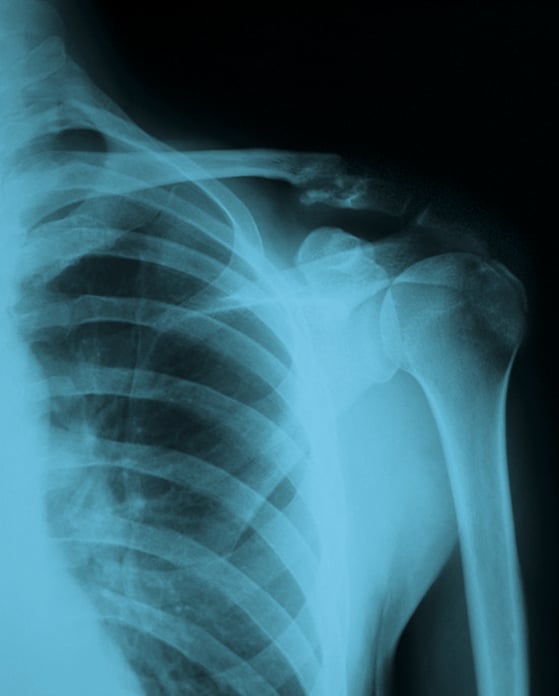
Issue 057
December 2009
What is it?
The shoulder is essentially a ball and socket joint. To let you move your arm around freely, it has to allow a wide range of movement. This freedom of movement comes at a cost, and means that the shoulder ‘socket’ is very shallow.
As a result the shoulder tends to be relatively unstable compared to other joints in the body and is the most commonly dislocated. [Not to be confused with an acromioclavicular (AC) joint separation, which is another common injury that can also occur from falls and collisions involving the shoulder.]
A dislocated shoulder occurs when the ‘ball’ at the top of the humerus (upper arm-bone) is forced out of its ‘socket’ on the shoulder blade. At the same time there will be damage to the ligaments and muscles supporting the joint.
How it happens
The injury commonly occurs from a fall or collision where force is transmitted through the arm to the shoulder joint. It can also result from a bent armlock, such as a kimura or Americana.
Who has it happened to?
A shoulder injury forced Manny Gamburyan to tap out in his fight against Nate Diaz in The Ultimate Fighter 5 finale. This was later confirmed to be a dislocated shoulder.

Treatment
Despite what you may have seen in films, never try to put a dislocated shoulder back in place by yourself, and be wary of well-meaning coaches or teammates who offer to do it for you! Firstly, it is very easy to confuse a fracture with a dislocation; and secondly, there are many important veins, arteries and nerves that are close to the joint and may be damaged if it is not treated correctly.
A dislocated shoulder needs to be relocated (put back into place) by a professional as soon as possible. Depending on the amount of damage, surgery may be needed. Afterwards the arm is likely to be placed in a sling for a few weeks.
What long-term problems is it likely to cause?
Once a shoulder has been dislocated the supporting muscles and ligaments will be stretched and weakened and it is more likely to become injured again in the future. In some people, the joint can become so unstable that it repeatedly dislocates with the slightest force.
Rehabilitation is extremely important. Exercises to improve the strength of the rotator cuff muscles help to provide some support and prevent recurrence. If a shoulder has been repeatedly dislocated, it is likely that surgery will be needed to restore stability to the joint. In rare cases there may be some lasting nerve damage as a result of the injury.
How long can a fighter expect to be out for?
This will vary depending on the extent of the damage and whether surgery is needed. In the best case, with good rehabilitation, it may be possible to return to light training within a few months. In other cases, making a full recovery can take a year or more.
...









